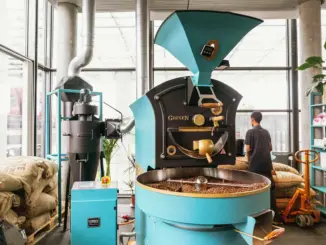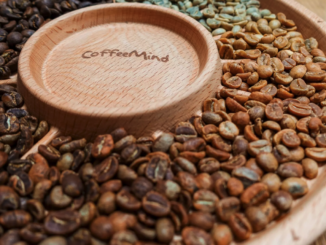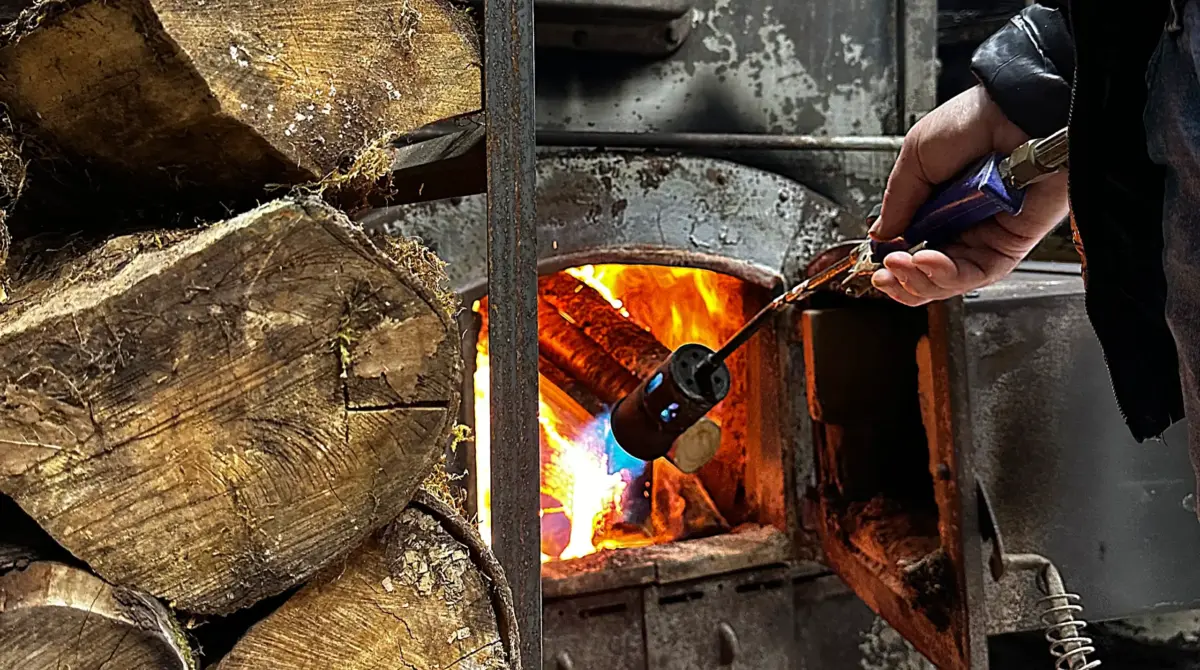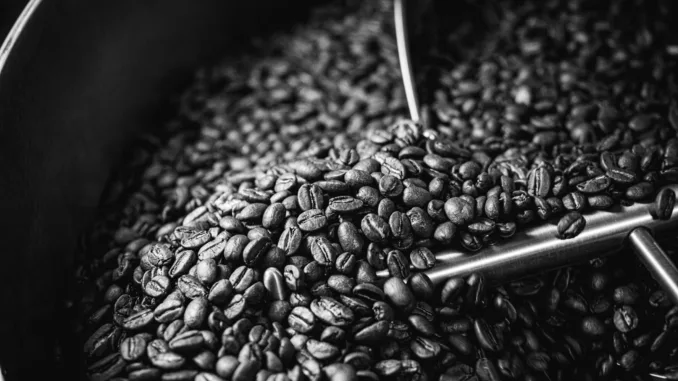
How does drum roasting work? Daniel Horbat, founder and roaster of Sumo Coffee Roasters, explains everything there is to know about this classic roasting method.
BY TANYA NANETTI
SENIOR ONLINE CORRESPONDENT
Featured photo by Paulo Evangelista
For years I wanted to learn more about roasting machines, and knowing how broad the topic was, I thought I had to find the right starting point to jump in. During a recent chat with a couple of roasting friends, I realized that I could begin by delving into the two basic types of professional roasters: drum roasters and hot-air roasters.
Daniel Horbat is known in the coffee industry as the 2019 World Cup Tasters Champion and the founder and roaster of the Irish company Sumo Coffee Roasters. He roasts with a P12 III Series, a classic drum roaster made by Germany’s Probat (one of the oldest roaster brands at over 150 years). Completely satisfied with his P12, , Daniel was just the person to help me learn more about this technology.

Drum Vs. Hot-Air Roasting
“A drum roaster is a traditional coffee roasting machine in which coffee beans are tumbled inside a rotating drum. The main components are the drum, the heat source (usually gas or electric burners under the drum), temperature sensors, and an exhaust system to expel smoke and chaff,” Daniel began. “The main difference from hot-air roasters is that drum roasters primarily use conductive heat from the drum and surrounding hot air, while hot-air roasters rely solely on convection, blowing hot air through the beans.”
Continuing his comparison of the two roasting styles, Daniel added that drum roasting can be more challenging to master “because of the balance between heat conduction and convection. Hot-air roasting is more uniform in terms of heat application, but lacks the deep control over flavor development that drum roasters offer. Drum roasting also allows for more nuanced adjustments during roasting, a process that typically takes longer because the drum itself must heat up and the beans are exposed to heat more gradually. Hot-air roasters apply heat more quickly, thus shortening roasting time, but drum roasters offer more control over the roasting profile.”
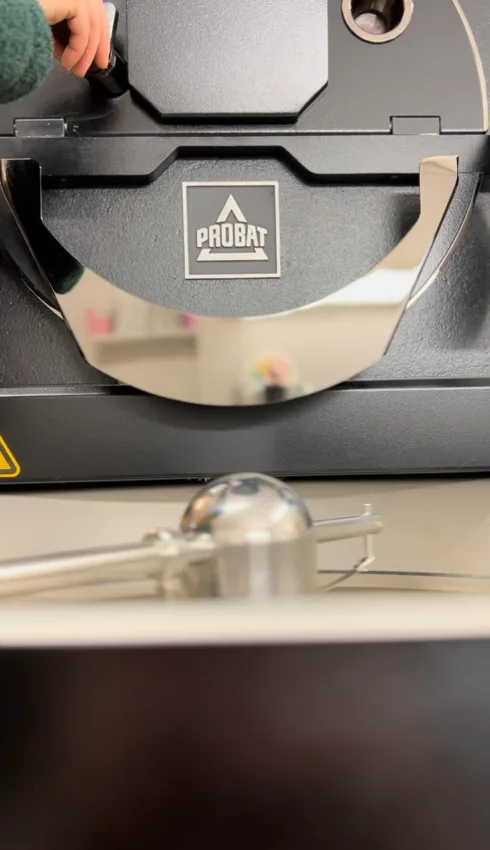
Considering Profiles
The mention of roasting profile reminded me that, in my coffee career, I have tasted many classically drum-roasted beans that ranged from super-light to bold and dark. Is drum roasting best suited to a specific type of roast or, as I already suspect, can it work well with different roasting profiles?
“The heat and airflow control allows roasters to adapt the profile to any style, making it ideal for both delicate light and rich dark roasts,” Daniel answered. “Drum roasters tend to bring out more body and deeper, more complex flavors in coffee due to the combination of conduction and convection heat. The slower application of heat allows for fuller development, which contributes to a balanced aftertaste, often emphasizing caramelization and sweetness, while in terms of flavor, they often have deeper body and complexity than air-roasted beans.”
Then, elaborating on how drum roasting works, Daniel said that “the beans are heated when the drum rotates and exposes them to both the conductive heat of the drum surface and the convective heat of the hot air inside. Most drum roasters use gas or electric heat to achieve this. During drum roasting, the beans are continuously stirred by the rotating drum, which helps to ensure uniform heat exposure. The beans are constantly stirred, promoting uniformity, although slight differences in heat exposure can occur, leading to minor inconsistencies.”
Inconsistencies that, as Daniel told me, “can occur, but with proper management of drum speed, airflow and heat can be minimized. Drum roasters require a more hands-on approach to avoid problems such as uneven roasting or scorching.”
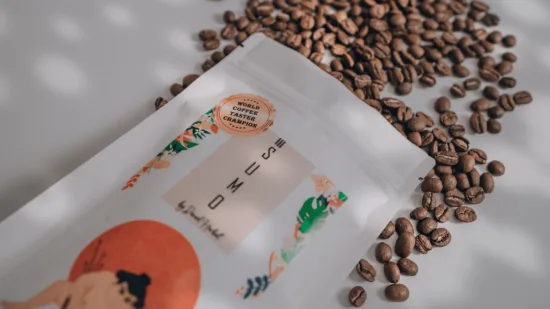
Mastering the Drum
Drum roasting seems like a science that must be mastered to get a good result, so I was curious what parameters can be controlled during the roasting process.
“You can control temperature (heat input), drum speed and airflow,” Daniel told me. ”Adjusting these parameters affects the rate at which the beans absorb heat and the development of roasting. Unlike hot-air roasters, drum roasters allow you to control the rate of heat conduction from the drum surface.” Daniel added that “temperature control is critical: Modern drum roasters are equipped with sensors to monitor bean temperature (BT) and ambient temperature (ET). To control the roasting profile, heat input and airflow are adjusted. The balance between conduction and convection heating in drum roasting allows precise control of development time.”
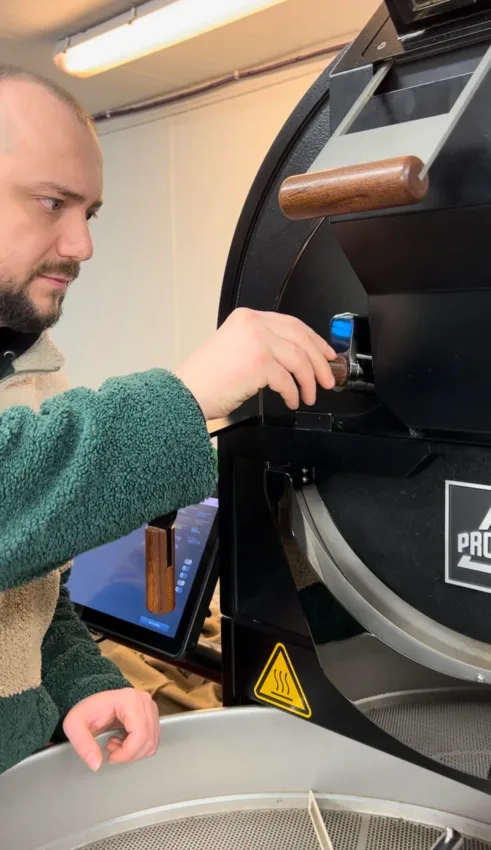
Managing Maintenance
At this point, I had a question related to a term I have often heard in connection with drum roasting: coffee chaff.
“The chaff is the outer skin of the coffee bean that comes off during roasting,” Daniel explained. “In a drum roaster, the chaff is collected in a separate collector or discharge system. If not handled properly, burnt chaff can cause smoky flavors in the coffee, but good maintenance and airflow management help prevent this problem.“
Daniel added that drum roasters require regular maintenance for maximum efficiency and longevity. “This includes, as mentioned, cleaning the chaff collector, but also inspecting and cleaning the drum, checking the gas lines (for gas models), and cleaning the exhaust system to avoid buildup that could compromise performance or safety.“
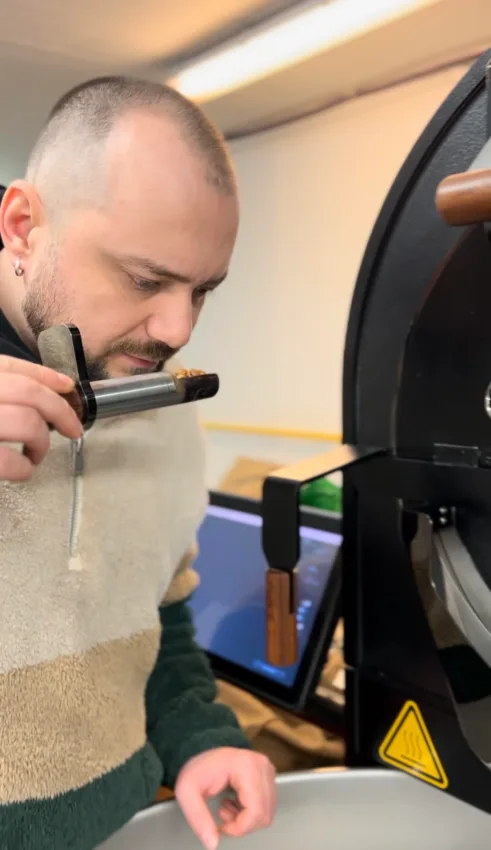
Energy Effiency Vs. Control
In summary, drum roasting seems to be a method that can be appreciated for its great control over the application of heat to develop complex flavor profiles, for being suitable for a variety of roasting levels (light to dark), and for the way it conducts heating, helping to create a rich body and deep flavors. On the other hand, compared to hot-air roasting, drum roasting requires more manual attention to maintain consistency, and has the potential for burning or underdevelopment if not carefully monitored.
Moreover, drum roasting is definitely a slower roasting process than hot-air roasting. That brought me to my last curiosity, regarding a key aspect of any process: energy efficiency.
“Drum roasting can be less energy efficient than hot-air roasting because it requires more time to heat the metal drum and maintain temperature,” Daniel concluded. “However, well-insulated drum roasters and the use of appropriate batch sizes can improve efficiency.”
ABOUT THE AUTHOR
Tanya Nanetti (she/her) is a specialty-coffee barista, a traveler, and a dreamer. When she’s not behind the coffee machine (or visiting some hidden corner of the world), she’s busy writing for Coffee Insurrection, a website about specialty coffee that she’s creating along with her boyfriend.
Subscribe and More!
Out now: It’s the October + November 2024 issue of Barista Magazine! Read it for free with our digital edition. And for more than three years’ worth of issues, visit our digital edition archives here.
You can order a hard copy of the magazine through our online store here, or start a subscription for one year or two.



